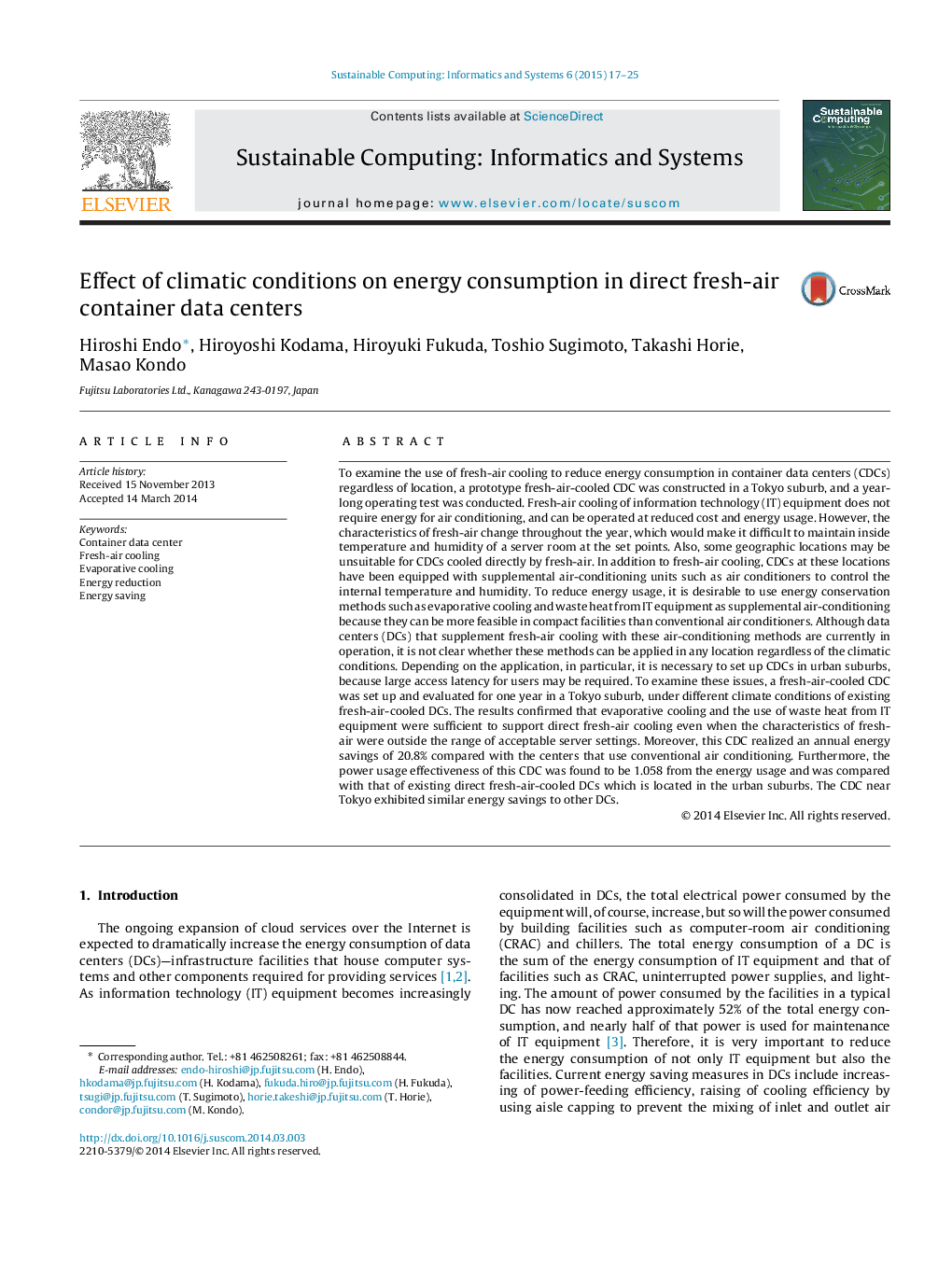| کد مقاله | کد نشریه | سال انتشار | مقاله انگلیسی | نسخه تمام متن |
|---|---|---|---|---|
| 493902 | 723152 | 2015 | 9 صفحه PDF | دانلود رایگان |
• Fresh-air-cooled container data center is set in a Tokyo suburb.
• Our container has been managed within the server environmental conditions for a year.
• Our container exhibit a 20.8% reduction in the total energy use compared with CRAC.
• The PUE observed in the temperate humid climate is similar to those in other areas.
To examine the use of fresh-air cooling to reduce energy consumption in container data centers (CDCs) regardless of location, a prototype fresh-air-cooled CDC was constructed in a Tokyo suburb, and a year-long operating test was conducted. Fresh-air cooling of information technology (IT) equipment does not require energy for air conditioning, and can be operated at reduced cost and energy usage. However, the characteristics of fresh-air change throughout the year, which would make it difficult to maintain inside temperature and humidity of a server room at the set points. Also, some geographic locations may be unsuitable for CDCs cooled directly by fresh-air. In addition to fresh-air cooling, CDCs at these locations have been equipped with supplemental air-conditioning units such as air conditioners to control the internal temperature and humidity. To reduce energy usage, it is desirable to use energy conservation methods such as evaporative cooling and waste heat from IT equipment as supplemental air-conditioning because they can be more feasible in compact facilities than conventional air conditioners. Although data centers (DCs) that supplement fresh-air cooling with these air-conditioning methods are currently in operation, it is not clear whether these methods can be applied in any location regardless of the climatic conditions. Depending on the application, in particular, it is necessary to set up CDCs in urban suburbs, because large access latency for users may be required. To examine these issues, a fresh-air-cooled CDC was set up and evaluated for one year in a Tokyo suburb, under different climate conditions of existing fresh-air-cooled DCs. The results confirmed that evaporative cooling and the use of waste heat from IT equipment were sufficient to support direct fresh-air cooling even when the characteristics of fresh-air were outside the range of acceptable server settings. Moreover, this CDC realized an annual energy savings of 20.8% compared with the centers that use conventional air conditioning. Furthermore, the power usage effectiveness of this CDC was found to be 1.058 from the energy usage and was compared with that of existing direct fresh-air-cooled DCs which is located in the urban suburbs. The CDC near Tokyo exhibited similar energy savings to other DCs.
Journal: Sustainable Computing: Informatics and Systems - Volume 6, June 2015, Pages 17–25
